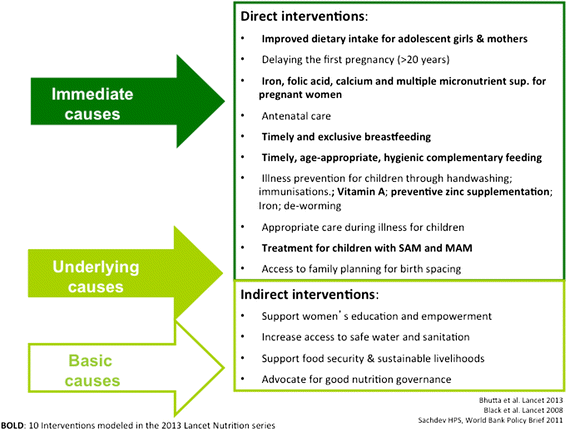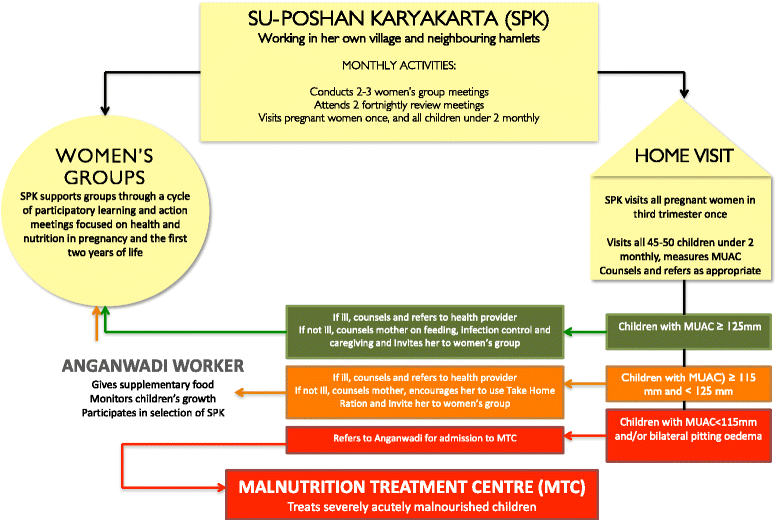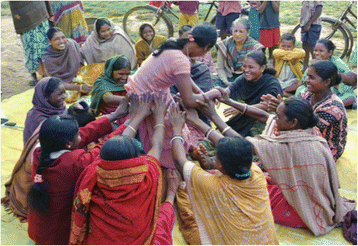Participatory women's groups and counselling through home visits to improve child growth in rural eastern India: protocol for a cluster randomised controlled trial
- PMID: 25886587
- PMCID: PMC4410595
- DOI: 10.1186/s12889-015-1655-z
Participatory women's groups and counselling through home visits to improve child growth in rural eastern India: protocol for a cluster randomised controlled trial
Abstract
Background: Child stunting (low height-for-age) is a marker of chronic undernutrition and predicts children's subsequent physical and cognitive development. Around one third of the world's stunted children live in India. Our study aims to assess the impact, cost-effectiveness, and scalability of a community intervention with a government-proposed community-based worker to improve growth in children under two in rural India.
Methods: The study is a cluster randomised controlled trial in two rural districts of Jharkhand and Odisha (eastern India). The intervention tested involves a community-based worker carrying out two activities: (a) one home visit to all pregnant women in the third trimester, followed by subsequent monthly home visits to all infants aged 0-24 months to support appropriate feeding, infection control, and care-giving; (b) a monthly women's group meeting using participatory learning and action to catalyse individual and community action for maternal and child health and nutrition. Both intervention and control clusters also receive an intervention to strengthen Village Health Sanitation and Nutrition Committees. The unit of randomisation is a purposively selected cluster of approximately 1000 population. A total of 120 geographical clusters covering an estimated population of 121,531 were randomised to two trial arms: 60 clusters in the intervention arm receive home visits, group meetings, and support to Village Health Sanitation and Nutrition Committees; 60 clusters in the control arm receive support to Committees only. The study participants are pregnant women identified in the third trimester of pregnancy and their children (n = 2520). Mothers and their children are followed up at seven time points: during pregnancy, within 72 hours of delivery, and at 3, 6, 9, 12 and 18 months after birth. The trial's primary outcome is children's mean length-for-age Z scores at 18 months. Secondary outcomes include wasting and underweight at all time points, birth weight, growth velocity, feeding, infection control, and care-giving practices. Additional qualitative and quantitative data are collected for process and economic evaluations.
Discussion: This trial will contribute to evidence on effective strategies to improve children's growth in India.
Trial registration: ISRCTN register 51505201 ; Clinical Trials Registry of India number 2014/06/004664.
Figures
References
-
- International Food Policy Research Institute. Global Nutrition Report 2014. Actions and Accountability to Accelerate the World’s Progress on Nutrition. Washington, DC; 2014. http://www.ifpri.org/sites/default/files/publications/gnr14.pdf. Accessed 1st April 2015. - PMC - PubMed
Publication types
MeSH terms
Associated data
Grants and funding
LinkOut - more resources
Full Text Sources
Other Literature Sources
Medical






